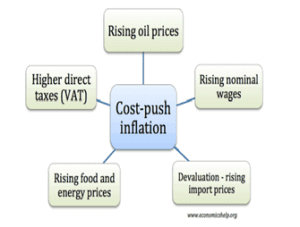WSDP Bulletin (20/02/2024)
(Newspapers, PIB and other important sources)
Prelim and Main
1. Bacteria could help turn CO2 to rock under extreme conditions READ MORE
2. A recently formed ocean inside Saturn’s moon Mimas READ MORE
3. Go back to dictionary meaning of ‘forest’: Supreme Court READ MORE
4. Ladakh leaders call off hunger strike as MHA agrees to discuss Statehood, constitutional safeguards READ MORE
5. Forest (Conservation) Amendment Act 2023: States, UTs must act as per definition in TN Godavarman judgement, says SC READ MORE
6. Only 32 Indian cities had clean air this January, Delhi, Bhagalpur most polluted READ MORE
7. Central Asian Flyway recognised to protect over 600 migratory bird species READ MORE
8. ISRO’s latest launch: Why is the GSLV rocket nicknamed ‘naughty boy’? READ MORE
9. Gemini Pro 1.5 with 1 million tokens surpasses GPT-4 Turbo: What does that mean? READ MORE
Main
GS Paper- 1
1. The tribal communities of central India: Challenges and way forward READ MORE
2. Gender disparity in Indian science READ MORE
3. La Nina impacted air quality in India in the winter of 2022: What a new study says READ MORE
4. Bangladesh experienced 185 extreme weather events between 2000 and 2019: ICCCAD report READ MORE
GS Paper- 2
POLITY AND GOVERNANCE
1. Uttarakhand UCC pits vulnerable young couples against the might of the state READ MORE
2. Transparency in poll funding remains a challenge READ MORE
3. Undermining the right to learn READ MORE
4. The implications of the Supreme Court ruling READ MORE
5. Tamil Nadu: The power struggle intensifies READ MORE
SOCIAL ISSUES
1. Can safe drinking water improve children’s educational outcomes? READ MORE
INTERNATIONAL ISSUES
1. Ties across the sea: On the India-UAE close relationship READ MORE
2. The rise of ‘intelligence diplomacy’ in a time of global security challenges READ MORE
3. India-UAE relations look beyond the diaspora READ MORE
GS Paper- 3
ECONOMIC DEVELOPMENT
1. Denying MSP legal guarantee threat to India’s food security READ MORE
2. What does a guaranteed MSP mean? READ MORE
3. MSP proposal: Govt’s offer fails to convince farmer leaders READ MORE
4. Farmers’ demands are impractical and unrealistic READ MORE
5. Agriculture Infrastructure Fund: A catalyst for India’s agri-future READ MORE
6. Skill development: Key to India’s shifting job market READ MORE
7. Balancing welfare and fiscal responsibility READ MORE
ENVIRONMENT AND ECOLOGY
1. Warming up to climate change: How does climate change impact extreme weather events? READ MORE
2. Air pollution needs decentralised, micro solutions READ MORE
SCIENCE AND TECHNOLOGY
1. Hundred years ago, Satyendra Nath Bose changed physics forever READ MORE
2. Recalibrating merit in the age of Artificial Intelligence READ MORE
3. Why big data is becoming small READ MORE
INTERNAL SECURITY
1. Misplaced priorities: On the scrapping of the Free Movement Regime between India and Myanmar READ MORE
DISASTER MANAGEMENT
1. In Morbi’s debris, the role of the State in PPP projects READ MORE
GS Paper- 4
ETHICS EXAMPLES AND CASE STUDY
1. Chandigarh mayor polls: Presiding officer admitted he tampered ballots, must be prosecuted, orders Supreme Court READ MORE
2. The Role of Discipline in Education READ MORE
3. Basant asks us to shift from wanting to giving READ MORE
4. ‘Triple A’ personality: Anant, Akash, Anand READ MORE
5. The mind and soul READ MORE
Questions for the MAIN exam
1. As the benefits are more than the cost of the free movement regime between India and Myanmar hence, it should not be scrapped. Critically examine.
2. The Supreme Court is right in striking down electoral bonds for not being transparent, but it does not help bring transparency into electoral funding in any manner. Examine.
3. The larger objectives of enhancing food security, increasing farmers’ income and reducing dependence on imports can be achieved if the glaring anomalies in the MSP regime are removed. Comment.
4. Discuss the importance of skill-based education to bridging the gap between potential and realisation in a job market increasingly favouring specialised technical skills.
5. The distribution of power between the Centre and states as put forth by the Seventh Schedule of the Constitution has created a fiscal gap and led to a vertical fiscal imbalance. Examine.
QUOTATIONS AND CAPTIONS
- We need to move forward on AI development but we also need to be mindful of its very real dangers.
- India-UAE ties are also built on a bedrock of history and cultural engagement that includes centuries-old maritime trade and a diaspora that contributes about 18% of India’s global remittances.
- While India’s technological prowess and the UAE’s positioning as a trade and industry hub bring complementarities, the changes in their polity and societies bring possible friction points.
- The free movement regime between India and Myanmar had more benefits than costs.
- The idea of neighbourly relations and borders was tied not just to the interest of national security for the post-colonial nation-state but also to the interests of the people in border areas and their imagined histories.
- The Agreement for an Intergovernmental Framework on the India-Middle East Economic Corridor paves the way for multilateral cooperation between India and the UAE.
- Recalibrating meritocracy in the face of AI advancements demands a sophisticated understanding of the interplay between technology and societal structures.
- The Supreme Court is right in striking down electoral bonds for not being transparent, but it does not help bring transparency into electoral funding in any manner.
- Governments (States and Centre) have to find comprehensive long-term solutions to the problems confronting farmers and their livelihoods, climate change, food inflation and the demands of food and nutrition security.
- The larger objectives of enhancing food security, increasing farmers’ income and reducing dependence on imports can be achieved if the glaring anomalies in the MSP regime are removed.
- India needs to think of alternative initiative(s) to ensure its place in the international domain, as it has come up with the idea of the India-Middle East-Europe Economic Corridor, which seems to be gaining momentum.
- To prevent the influence of money in elections in the future, we need regulations for donations, spending limits, public funding, and disclosure.
- The Agriculture Infrastructure Fund aims to improve India’s agricultural infrastructure by providing incentives and financial support for medium to long-erm debt financing.
- Skill-based education is paramount to bridging the gap between potential and realisation in a job market increasingly favouring specialised technical skills.
ESSAY TOPIC
- We need to move forward on AI development but we also need to be mindful of its very real dangers.
50-WORD TALK
- As India stands on the brink of an era of transformation, it is vital to rethink education, give priority to on-the-job training, and embrace apprenticeships to shape a workforce that not only possesses theoretical knowledge but also has the practical tech-based skills necessary to gain a competitive advantage and thrive in the dynamic landscape of the country’s economy.
Things to Remember:
- For prelims-related news try to understand the context of the news and relate with its concepts so that it will be easier for you to answer (or eliminate) from given options.
- Whenever any international place will be in news, you should do map work (marking those areas in maps and exploring other geographical locations nearby including mountains, rivers, etc. same applies to the national places.)
- For economy-related news (banking, agriculture, etc.) you should focus on terms and how these are related to various economic aspects, for example, if inflation has been mentioned, try to relate with prevailing price rises, shortage of essential supplies, banking rates, etc.
- For main exam-related topics, you should focus on the various dimensions of the given topic, the most important topics which occur frequently and are important from the mains point of view will be covered in ED.
- Try to use the given content in your answer. Regular use of this content will bring more enrichment to your writing.


